Common Knee Injuries
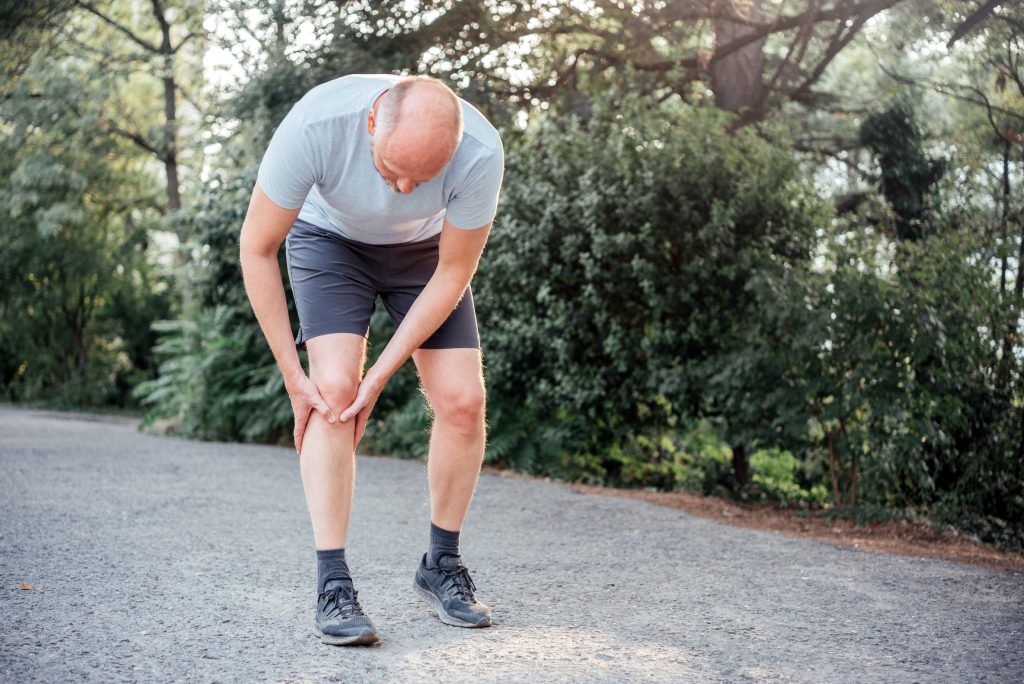
The knee is one of the largest and complex joints in the body. Due to its complexities along with the substantial loads undertaken on a daily basis, it is at risk of a variety of injuries. These injuries can often manifest because of the daily wear and tear of being the main load-bearing joint in the human body. Injuries also often occur to the knee during sports and exercise.
Most knee problems are due to the toxic effects of chronic inflammation, AGE deposits (advanced glycation endproducts), and oxidative stress. The human body has the capacity to heal almost anything if given the proper tools and time. That said, many orthopedic surgeons recommend surgical interventions for some of these issues regarding the knee.
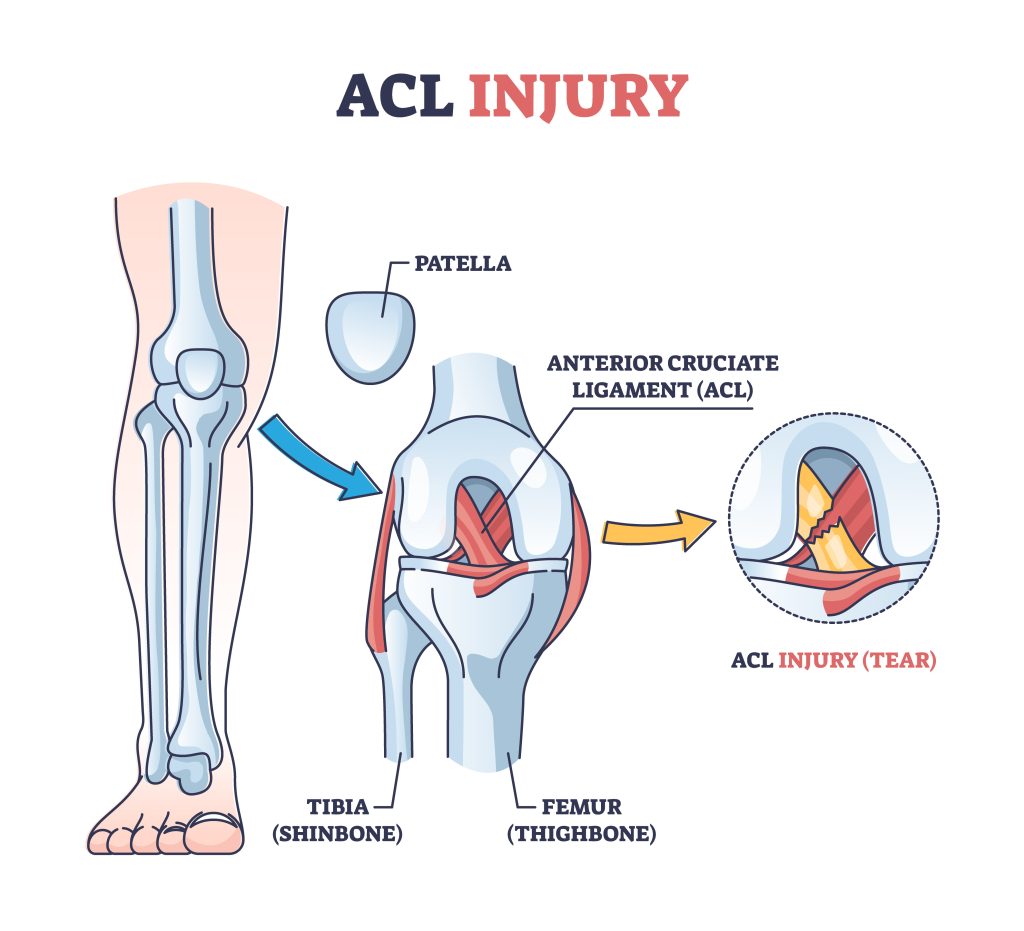
Anterior Cruciate Ligament (ACL) Injuries and Posterior Cruciate Ligament (PCL) Injuries
Just about everyone has heard of an athlete tearing their ACL and the long road back to being active after this injury occurs. The main difference between the two ligaments is that the ACL is located in the front of the inside part of the knee and the PCL is located in the back of the knee. A ligament is a structure that holds bones together and helps control the movement in joints.
These are called ‘cruciate’ ligaments because they cross each other inside the joint. When sudden pivots and turns are made, it can tear the ligaments. Each ligament is responsible for controlling certain aspects of knee motion. This is why this injury occurs in athletes so often, but anyone can tear the ligaments in their knee just by doing daily activities. Likewise, this ligament commonly degenerates and begins to deteriorate due to chronic low-grade inflammation.
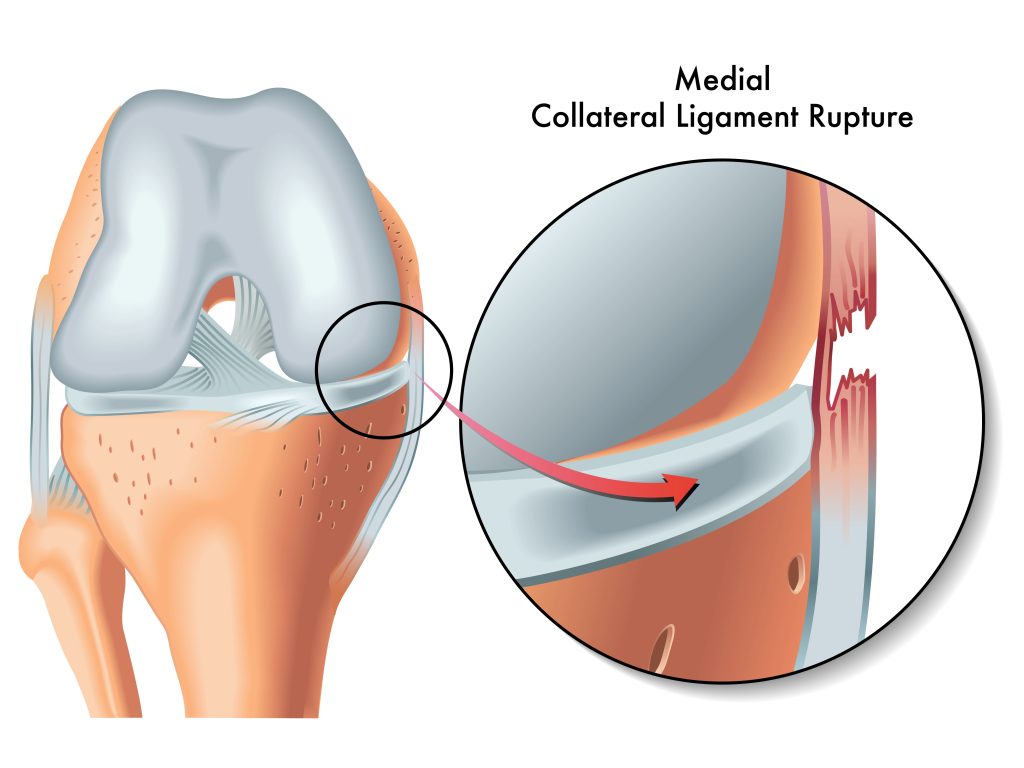
Collateral Ligament Injuries
The collateral ligaments support the outside and inside aspects of the knee joint and stabilize the knee in the coronal plane. This is the plane of view if you are looking straight at someone. Collateral ligaments would be involved in those who are ‘knock-kneed’, or ‘bow-legged’.
Collateral ligament injuries happen when the ligament is stretched or torn. There are partial tears and complete tears. A complete tear is when the ligament is torn into two pieces. These injuries are often caused by an outside force pushing the knee sideways. This ligament connects your thighbone to your lower leg bone at the level of the knee. People that suffer from true ruptures are most often athletes that play contact sports, like soccer. Most of these tears are partial and are simply due to weakened and abnormal connective tissues over time due to lifestyle stressors such as diet.
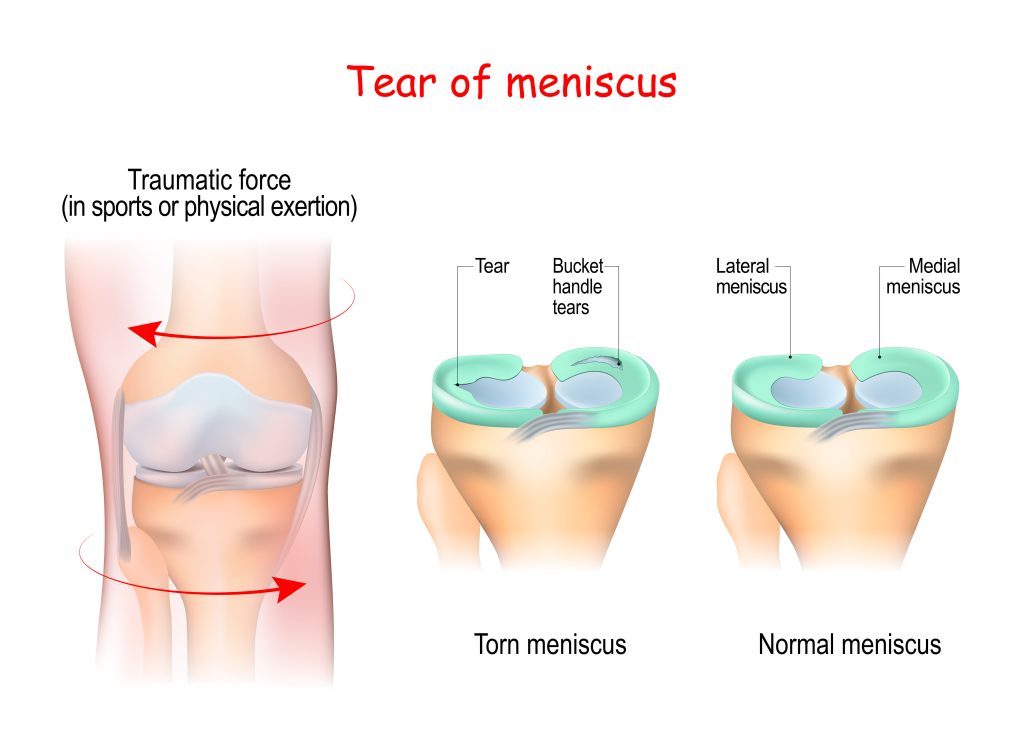
Meniscal Tears
Like many other knee injuries, meniscal tears happen to athletes when pivoting or making sudden stops and turns. However, arthritis and aging can also cause tears in the meniscus. When studying MRI images of large groups of people with no knee pain at all, a large percentage will have meniscus tears. This is a common finding and could almost be considered a normal part of being an adult human at certain times.
Degenerative meniscus tears can happen when the knee is contorted in an awkward way. More often, the fibers are simply mechanically deficient due to altered connective tissues and extracellular matrix construction. This is a result of chronic low-grade inflammation, poor healing environment, and oxidative stress. The menisci are the two pieces of fibrocartilage in between your femur and tibia. These pieces of cartilage are there to absorb shock. They also provide some rotational control to the knee.
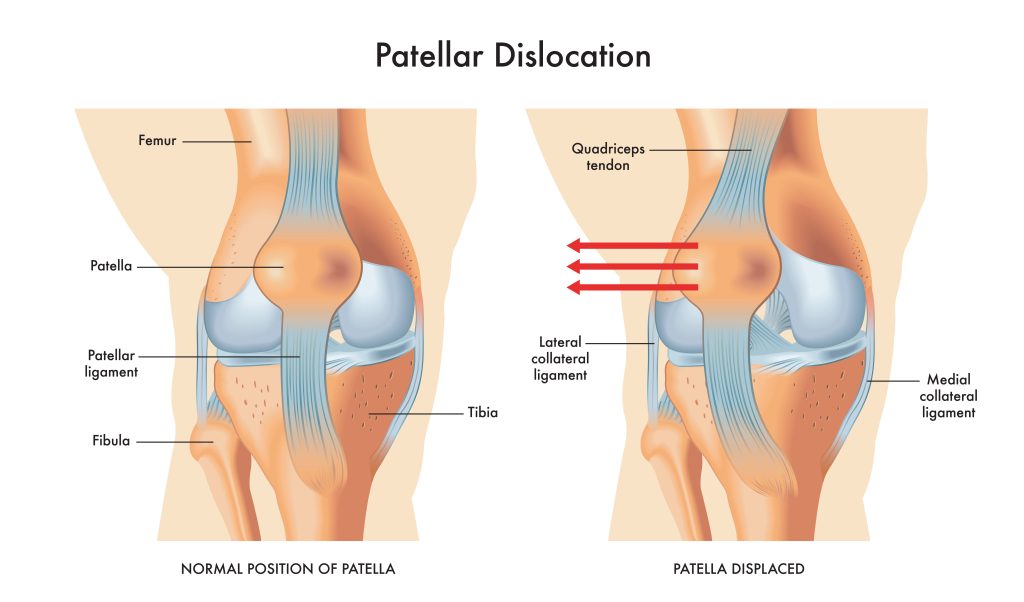
Patellar Dislocation
Dislocations occur in the knee when the patella, also known as the kneecap, slides out of place. This can happen with a sudden fall, a big hit to the knee, or even a car accident. It sometimes happens just because of the shapes of the bones involved and no trauma is required at all. In other words, dislocations can be caused by an irregular structure of a knee.
In the average person, the kneecap sits perfectly in a U-shaped notch called the femoral groove. This is located between the femur and the patella. If the groove is an abnormal shape, too shallow or uneven, the kneecap could have a tendency to slip out of place. For most people, a dislocated knee comes as a result of an impact. This can cause pain and discomfort, but can be shifted back into place. Strengthening of weak muscles and stretching of contracted connective tissues is a mainstay of treatment. Bracing and taping also helps a lot.
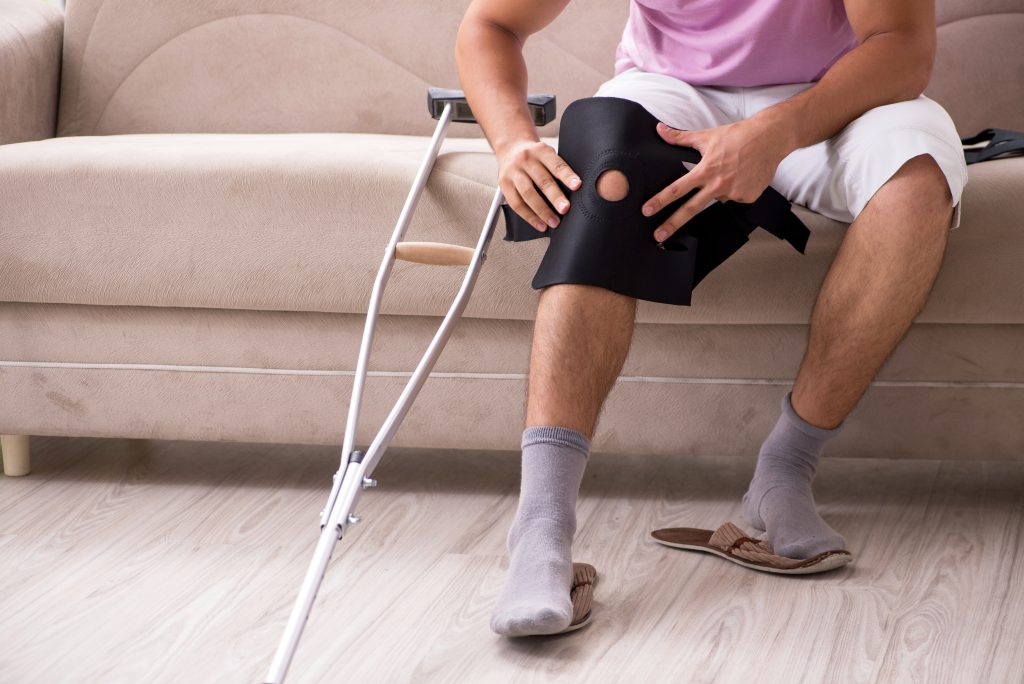
Fractures and Tendon Tears
The Patella is the most common bone that is fractured in the knee. The tibia and femur can also be fractured where they meet the kneecap. Fractures can happen from trauma, like falling directly onto a hard surface.
Tendons are the tissues that connect muscles to the bones. Tendon tears occur in the knee at the quadriceps and patellar tendons. The quadriceps muscle connects the thigh muscles to the kneecap. The patellar tendon connects the kneecap to the shin. These tears happen when the tendons are stretched, or lacerated somehow.
While young people can suffer from tendon tears, the most common group to suffer is middle aged people. As people age, their tendons lose elasticity and also become dysfunctional. This is due to the reasons mentioned above. That is, AGE deposition, chronic inflammation, and oxidative stress. Such altered connective tissues make it easier to tear when taking on normal stress from daily activity.
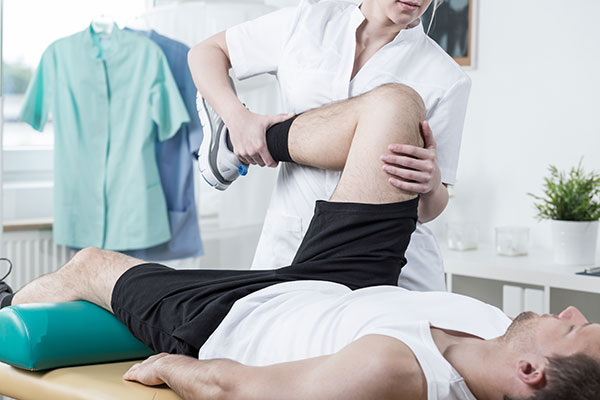
Treatment
Initial recovery from knee injuries involves lots of rest and avoiding putting weight on the injured knee as much as possible. Early motion and active rehabilitation works the best for almost all problems with the knee. This should be decided by and managed by your treating provider.
Icing the knee in 20-minute increments throughout the day is a great way to decrease blood flow around the injured area, which helps reduce pain and inflammation. Elevation is key in healing knee injuries, much like ice, this too reduces blood flow around the injury. Wearing a compression sleeve can help stability and reduce pain in the knee injury.
Providing your body the tools it needs to heal, such as micronutrients, good sleep, and a low stress environment will help as well. Keeping a good mindset is also of the utmost importance.





